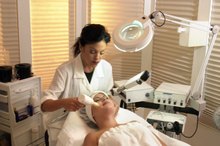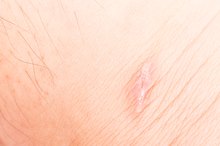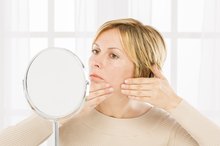What does fact checked mean?
At Healthfully, we strive to deliver objective content that is accurate and up-to-date. Our team periodically reviews articles in order to ensure content quality. The sources cited below consist of evidence from peer-reviewed journals, prominent medical organizations, academic associations, and government data.
The information contained on this site is for informational purposes only, and should not be used as a substitute for the advice of a professional health care provider. Please check with the appropriate physician regarding health questions and concerns. Although we strive to deliver accurate and up-to-date information, no guarantee to that effect is made.
How to Get Rid of Acne Pock Marks
Getting rid of acne once and for all can be a very liberating feeling. However, if a bunch of pock marks are left behind, it's likely that you'll feel even worse about yourself than you did when you were the breaking out. But don't despair. There are things you can do that will improve the texture of your skin and even remove your pock marks entirely.
Don't rush. Wait to heal completely before trying major scar-removal procedures. When an acne blemish heals, it can leave behind redness, irritation, and dips and dents in the skin. In some cases, these scars will fade away on their own in time, or at least improve 1. Give your skin at least six months to heal on its own before you take extraordinary measures.
How to Get Rid of Stitch Scars on the Face
Learn More
Ask your doctor about fillers. Dermal fillers eliminate the appearance of your pock marks. A dermatologist will inject the pock mark with a substance like fat or collagen to fill it in and make it even with the rest of your face. Though you need to have this done every few months indefinitely, fillers do make pock marks vanish for a time.
Perform a chemical peel. You can buy mild over-the-counter peels like glycolic acid, which gently lifts off the top layer of skin to reveal healthier, smoother skin underneath. You can have this performed by a dermatologist as well, who will use a stronger formula. This leaves your skin more irritated initially, but the results are more dramatic.
Holes in My Face From Acne
Learn More
Discuss dermabrasion with your dermatologist. This procedure requires the use of a diamond-tipped device to sand off your skin. The top layer is removed so as to encourage new tissue growth and collagen production. After healing, your skin will look smoother and your pock marks should be less visible.
Undergo surgery. Called excision, this surgery involves cutting out your acne scar and sewing up the skin around it. This might leave a new scar, but it's generally much less noticeable than a depressed pock mark.
Related Articles
References
Writer Bio
Brenda Barron is a writer, editor and researcher based in Southern California. She has worked as a writer since 2004, with work appearing in online and print publications such as BabyZone, "Cat Fancy" and "ePregnancy." She holds a Bachelor of Arts in English literature from California State University, Long Beach.









